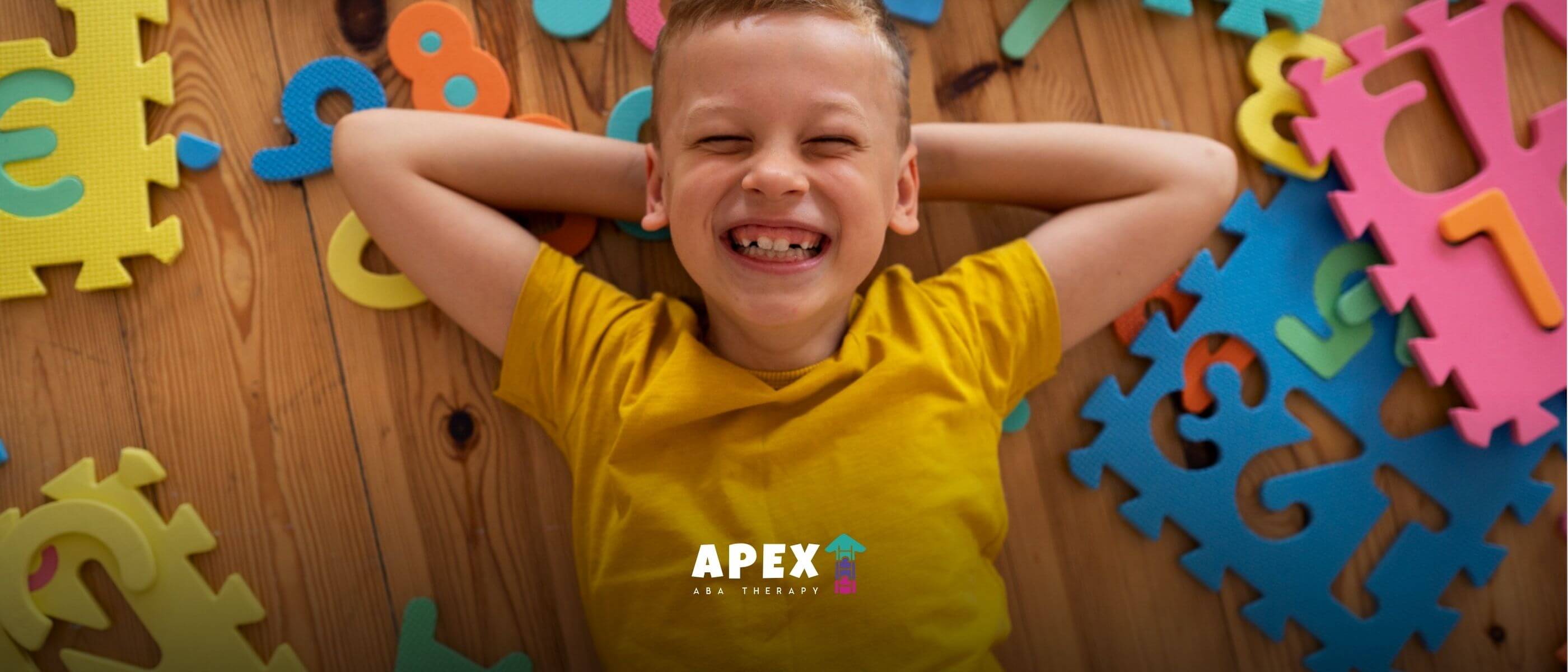Routine and Structure for Children with Autism
Discover the power of routine and structure for children with autism. Enhance stability, reduce anxiety, and promote positive behavior.

Routine and Structure for Children with Autism
Importance of Routines for Children with Autism
Establishing routines is of significant importance for children with autism. These routines provide stability, comfort, and numerous learning benefits for children on the autism spectrum.
Stability and Comfort Through Routines
Children with autism thrive in environments that are predictable and structured. The repetitive patterns of behavior, activities, and hobbies that they engage in can bring comfort and help establish a sense of security. By following established routines, children with autism know what to expect, reducing anxiety and promoting a sense of safety and stability [1].
The familiarity of routines can also help children with autism cope with anxiety-inducing situations and set them up for success in achieving new things. The repetitive nature of routines can provide a much-needed sense of control and order in their lives.
Learning Benefits of Established Routines
Routines play a crucial role in facilitating learning for children with autism. By providing a safe and secure environment, routines reduce stress levels and make children more receptive to learning [1]. The predictability of routines allows children with autism to understand what to expect, when to expect it, and how to react, creating a framework for learning.
In addition to reducing anxiety, routines contribute to the development of important life skills for children with autism. Through repeated practice and reinforcement, routines help children learn time management, self-regulation, and organizational skills. This increased independence and self-sufficiency positively impact their overall well-being and enhance their ability to participate in various settings, both at home and in the community.
By establishing routines, parents and caregivers can create a supportive and structured environment that promotes stability, comfort, and learning for children with autism.
Creating a Supportive Environment
When it comes to children with Autism Spectrum Disorder (ASD), creating a supportive environment is essential for their development and well-being. By tailoring the environment to meet their specific needs, we can enhance their physical, cognitive, social, and emotional growth. Additionally, providing a stress-free learning environment can greatly benefit children with ASD in their educational journey.
Tailoring the Environment for Children with ASD
Children with ASD often experience difficulties with communication, social interaction, and sensory sensitivities. Therefore, it is crucial to create an environment that takes these factors into consideration. Here are some key strategies to tailor the environment for children with ASD:
- Sensory considerations: Individuals with ASD may be sensitive to sounds, lights, or touch. Creating a calm and sensory-friendly environment can help minimize sensory overload. This may involve reducing bright lights, providing noise-cancelling headphones, and offering sensory tools like fidget toys or weighted blankets.
- Visual supports: Visual aids, such as written or picture schedules, can play a significant role in helping children with ASD understand daily activities and transitions. Visual supports provide structure and predictability, reducing anxiety and improving their ability to navigate their daily routines.
- Structured spaces: Designating specific areas for different activities can help children with ASD better understand and engage in their environment. For example, having a designated area for quiet time, playtime, and learning can provide a clear distinction between activities and support their focus and engagement.
Strategies for Stress-Free Learning
A structured and consistent environment is crucial for stress-free learning for children with ASD. Following established routines and incorporating specific strategies can greatly enhance their learning experience. Here are some key strategies to consider:
- Consistency in techniques: Using consistent techniques to interact with the child and manage behaviors across different settings can reinforce learning. This consistency helps children with ASD generalize skills and adapt to various environments more effectively.
- Visual supports for learning: Visual aids are invaluable tools for children with ASD. Incorporating visual supports, such as visual schedules, task lists, or visual cues, can help them understand and follow instructions, stay organized, and complete tasks more independently.
- Positive reinforcement: Reinforcing positive behaviors through praise, rewards, or token systems can motivate children with ASD to engage in desired behaviors and tasks. By focusing on positive reinforcement, we can create a positive and encouraging learning environment.
By tailoring the environment and implementing strategies for stress-free learning, we can provide children with ASD the support they need to thrive and reach their full potential. Exposing children with ASD to a comfortable, consistent, and fun environment can significantly impact their learning and development, helping them grow and succeed in their educational journey.
Motivating Positive Behavior
Motivating positive behavior is an essential aspect of supporting children with autism and encouraging their overall development. By reinforcing positive behaviors and integrating learning with play activities, we can create an engaging and supportive environment for children with autism.
Reinforcing Positive Behaviors
Rewarding positive behaviors is a powerful strategy in motivating children with autism to display these behaviors more frequently. This can be done through various means, such as social praises, toys, snacks, or physical touch. By providing positive reinforcement, children with autism are encouraged to continue engaging in desired behaviors.
It's important to tailor the rewards to the individual preferences and needs of each child. What may be motivating for one child might not be as effective for another. By understanding the unique interests and preferences of the child, we can identify the most suitable rewards that will encourage and reinforce positive behaviors.
Integrating Learning with Play Activities
Integrating learning with play activities is an effective way to engage children with autism and make the learning process more enjoyable and meaningful for them. By incorporating educational goals into play-based activities, children with autism can acquire new skills and knowledge in a natural and engaging way.
Play activities provide a context that is familiar and enjoyable for children with autism, allowing them to be more receptive to learning. For example, using interactive games, puzzles, or role-playing activities can help children develop social, communication, and problem-solving skills while having fun.
By combining structured learning objectives with play-based activities, educators and parents can create a motivating and supportive environment that encourages positive behavior and facilitates learning for children with autism.
To further explore strategies for supporting children with autism, you may be interested in our article on advocating for your child with autism in school and helping siblings understand autism.
Impact of Routines on Anxiety and Learning
Establishing routines can have a profound impact on children with autism, particularly in reducing anxiety levels and enhancing learning and skill development. By providing predictability and eliminating uncertainty, routines create a sense of stability and security, helping individuals with autism feel calm and relaxed throughout the day. This is especially important as individuals with autism may struggle with adapting to new situations or unexpected changes.
Reducing Anxiety Through Predictability
Routines play a crucial role in reducing anxiety in individuals with autism. By following established routines, they can anticipate what comes next, eliminating the fear of the unknown. Consistency is key, as individuals with autism rely on established routines to provide structure and predictability in their lives. In a structured environment, individuals with autism can find areas of predictability, which helps them overcome anxiety around transitions and changes [5]. This predictability helps manage sensory overload, as routines provide predictable patterns of stimulation throughout the day, reducing unexpected changes that may trigger anxiety or distress [4].
Enhancing Learning and Skill Development
In addition to reducing anxiety, routines also enhance learning and skill development for children with autism. By eliminating the need for constant adjustment and adaptation, routines allow individuals to focus on the task at hand without worrying about what comes next. This focused attention promotes effective learning, as individuals can fully engage with the material or activity without distractions. Structured routines in a home, school, or work environment increase the likelihood of success and support effective communication for individuals with autism.
By providing a consistent and predictable framework, routines allow individuals with autism to develop a sense of control and mastery over their environment. This, in turn, fosters a positive learning experience and helps them acquire and generalize new skills more effectively. It is important to note that routines should be tailored to the individual's specific needs and preferences, taking into account factors such as sensory sensitivities, communication abilities, and personal interests.
In the next section, we will explore strategies for structuring routines, including consistent mealtimes and bedtimes, as well as incorporating visual schedules to further support children with autism in their daily lives.
Strategies for Structuring Routines
When it comes to creating a supportive environment for children with autism, structuring routines plays a vital role. Establishing predictable patterns and incorporating visual aids can help provide a sense of stability and reduce anxiety for children with Autism Spectrum Disorder (ASD). In this section, we will explore two effective strategies for structuring routines: consistent mealtimes and bedtimes, and incorporating visual schedules.
Consistent Mealtimes and Bedtimes
Consistency is key when it comes to structuring routines for children with autism. Establishing consistent mealtimes and bedtimes can provide a sense of predictability and help create a stable environment. According to the Autism Specialty Group, this predictability is crucial for children with ASD as it helps them feel secure and reduces anxiety.
Having regular mealtimes promotes a healthy eating routine and ensures that children receive proper nutrition throughout the day. It's essential to establish a schedule and stick to it as closely as possible. Regular mealtime routines can also help with sensory issues and support children in trying new foods.
Similarly, consistent bedtimes are essential for establishing healthy sleep patterns. A consistent bedtime routine can signal to the child that it is time to wind down and prepare for sleep. Incorporating calming activities such as reading a book or listening to soft music can further enhance the bedtime routine. Adequate sleep is crucial for children with autism, as it contributes to their overall well-being and supports their ability to focus and regulate emotions.
Incorporating Visual Schedules
Visual schedules are powerful tools for structuring routines and providing visual cues for children with autism. These schedules can be daily, weekly, or monthly, depending on the child's needs and preferences. Visual schedules help children understand the sequence of activities and provide a visual representation of what to expect throughout the day.
According to Autism Awareness Centre, visual schedules support greater independence and can introduce the concept of making choices by having a part of the day allotted for choosing an activity. By incorporating visual aids, children with autism can better understand and anticipate transitions, reducing anxiety and promoting smoother transitions between activities.
Visual schedules can be created using pictures, symbols, or words based on the child's communication abilities and preferences. They can be placed in a prominent location or provided on a portable device, depending on what works best for the child. As routines may change or new activities may be introduced, visual schedules can be updated accordingly, allowing for flexibility while maintaining a structured environment.
By implementing strategies such as consistent mealtimes and bedtimes and incorporating visual schedules, parents and caregivers can create a structured routine that supports the unique needs of children with autism. These strategies promote predictability, reduce anxiety, and enhance the child's ability to effectively navigate daily activities. To learn more about advocating for your child with autism in school or other related topics, check out our articles on advocating for your child with autism in school and early childhood education for autism.
Addressing Challenging Behavior
When it comes to children with autism, addressing challenging behavior is an essential aspect of their overall development and well-being. Understanding the triggers and behavior patterns of autistic children can greatly assist in determining effective strategies for handling challenging behavior.
Understanding Triggers and Behavior Patterns
Autistic children may exhibit challenging behavior due to various reasons, and it's crucial to identify the triggers that lead to such behavior. Keeping a diary of the behavior for 1-2 weeks, noting when and where the behavior occurs, can aid in understanding the triggers, such as hunger, noise, or changes in routine [6]. By recognizing these triggers, parents, caregivers, and educators can proactively address them and implement appropriate strategies.
Each child with autism may have unique behavior patterns, and it's essential to observe and analyze these patterns to gain a deeper understanding of their needs. Identifying patterns in the challenging behavior can help determine whether certain situations, environments, or sensory stimuli contribute to the behavior. By doing so, caregivers can modify the environment or introduce strategies to reduce the impact of these triggers and promote positive behavior.
Strategies for Handling Challenging Behavior
When faced with challenging behavior in autistic children, employing effective strategies is key to addressing the behavior and promoting positive outcomes. Here are some strategies to consider:
- Focus on positive consequences: Reinforcing positive behaviors is crucial to encourage and reinforce good behavior. By providing praise, rewards, or incentives for desired behavior, children with autism can learn and internalize appropriate responses. Emphasizing positive consequences promotes self-esteem and encourages the repetition of positive behaviors.
- Establish clear rules: Clear and consistent rules play a vital role in guiding behavior. Instead of focusing on what not to do, it is important to emphasize what to do. Providing clear instructions and expectations helps children with autism understand and follow desired behavior patterns.
- Implement downtime for emotional regulation: Autistic children may experience sensory overload or emotional dysregulation, leading to challenging behavior. Allowing designated downtime or incorporating calming activities, such as sensory breaks or quiet time, provides an opportunity for emotional regulation and reduces the likelihood of challenging behavior [5].
- Plan ahead for challenging situations: Anticipating challenging situations and preparing children with autism in advance can minimize anxiety and potentially prevent challenging behavior. Visual supports, social stories, or other communication aids can be used to help children understand what to expect and how to navigate challenging situations.
- Reconnect with warmth and affection: After challenging behavior, it is important to reconnect with the child through warmth and affection. This helps strengthen the caregiver-child bond and reinforces positive behavior, fostering a sense of security and trust.
While these strategies can be effective, seeking professional help from a pediatrician or psychologist is recommended if concerns about a child's behavior persist. These professionals can provide guidance tailored to the specific needs of the child and offer additional strategies for managing challenging behavior.
It is crucial to note that physical punishment, such as smacking, is discouraged as a method to guide the behavior of autistic children. Physical punishment does not promote self-control or positive behavior learning, and it can inadvertently worsen behavior while posing a risk of causing harm to the child.
By understanding the triggers and behavior patterns of autistic children and implementing appropriate strategies, caregivers can effectively address challenging behavior and create a supportive environment that promotes positive outcomes.
References
Frequently Asked Questions

How to Teach Kitchen Safety to Autistic Children: A Parent’s Guide
Teaching kitchen safety to autistic children is easier with the right strategies. Learn step-by-step tips to create a safe environment and build essential skills.

How to Manage Attention-Seeking Behaviors in a Positive, Supportive Wayr
Learn how to reduce attention-seeking behaviors in children using positive reinforcement, clear boundaries, and communication skills. Find helpful strategies here.

Can Play Therapy and ABA Therapy Work Together to Help Your Child?
Combining play therapy with ABA therapy offers a powerful way to enhance your child’s growth. Find out how these therapies work together for lasting benefits.



